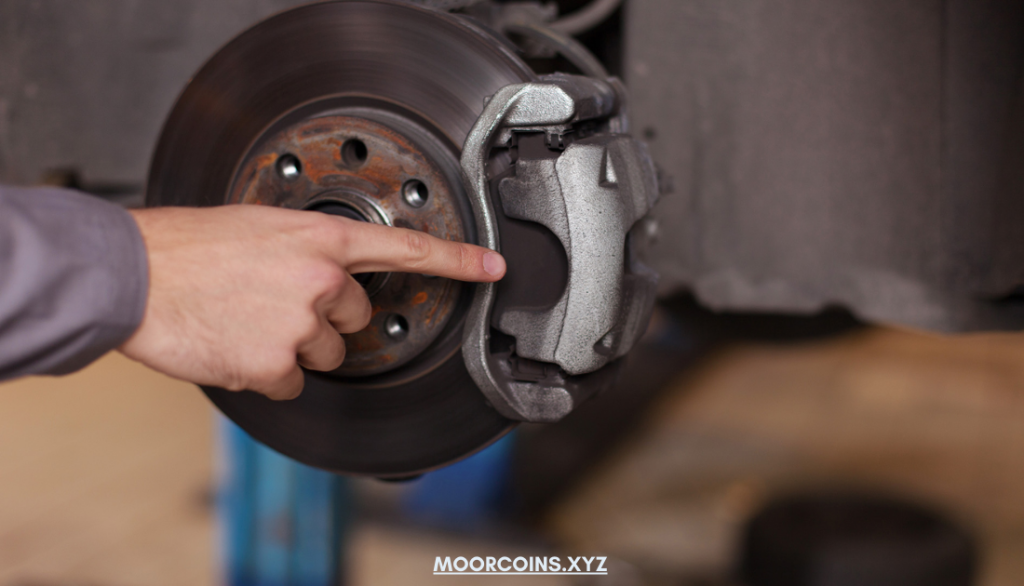Blog
Best Brake Pads for Cars: Your Ultimate Guide to Safety and Performance
When it comes to vehicle maintenance, few components are as crucial as the brake pads. They are the primary point of contact between your vehicle’s braking system and the wheels. Quality brake pads not only enhance your car’s safety but also contribute to smoother and quieter stops, which improves your driving experience. In this article, we’ll explore the best brake pads for cars, examining different types, top recommendations, and key considerations to help you make an informed choice.
Why Choosing the Right Brake Pads Matters
The choice of brake pads is far more than just a preference; it can affect everything from stopping distance to the longevity of your vehicle’s braking system. Good-quality brake pads reduce wear on your rotors and other braking components, leading to fewer repairs and lower maintenance costs over time. Furthermore, choosing the correct type can make your ride quieter and more comfortable. In addition, certain types of brake pads are better suited for specific driving conditions, such as city traffic, highway driving, or towing.
Types of Brake Pads
Understanding the different types of brake pads will allow you to choose the ones that match your driving habits and needs best. Each type has unique characteristics, from heat resistance to noise levels and dust production.
- Ceramic Brake Pads
Ceramic brake pads are popular for regular vehicles and daily driving. Made from dense ceramic materials with embedded copper fibers, they are known for producing minimal noise and dust. Additionally, they perform well at high temperatures, maintaining a stable friction level that contributes to smoother stops. However, ceramic pads tend to be pricier and may not offer the heavy-duty performance required for high-stress applications, such as off-road or towing. - Semi-Metallic Brake Pads
Composed of 30-65% metal (such as copper or steel), semi-metallic brake pads provide excellent durability and heat resistance. They’re well-suited for high-performance applications, making them a popular choice for trucks and sports cars. However, they tend to produce more noise and dust than other types, which can be a downside for those seeking a quieter ride. - Organic Brake Pads
Organic or Non-Asbestos Organic (NAO) brake pads are softer and quieter than their metallic counterparts. Made from materials like glass, rubber, and resins, they offer a gentler stopping experience. While these pads are affordable and environmentally friendly, they wear out faster and may not be suitable for high-speed or heavy-duty applications.
Top Brake Pads by Category
Now that we understand the different types, let’s look at some of the best brake pads for various driving needs. Choosing the right one can depend on factors such as budget, driving style, and vehicle type.
- Best Overall Brake Pad: [Brand & Model]
If you’re looking for all-around performance, this brake pad delivers reliable stopping power, minimal dust, and longevity. Moreover, it is designed to fit most standard vehicles, making it an excellent choice for daily drivers who prioritize durability and low noise. Users report that this model offers a comfortable ride with stable performance in both city and highway conditions. - Best for Heavy-Duty Use: [Brand & Model]
For those who drive heavy vehicles or frequently tow, a brake pad that can handle high temperatures and heavy loads is essential. This particular model is engineered for trucks, SUVs, and other larger vehicles, delivering exceptional durability. On the other hand, it may produce a bit more noise, which is common among high-performance brake pads. - Best Budget-Friendly Option: [Brand & Model]
Looking for affordability without sacrificing quality? This brake pad provides good performance at a budget-friendly price. Additionally, it’s easy to install, which makes it perfect for DIY car owners. While it may not last as long as premium options, it offers good stopping power and a relatively quiet ride. - Best for Low Dust: [Brand & Model]
Dust from brake pads can quickly make wheels dirty, leading many to seek low-dust options. This ceramic brake pad model excels in low dust production while still offering great stopping power. Furthermore, it operates quietly, making it an ideal choice for those who prioritize cleanliness and a smooth ride.

How to Choose the Best Brake Pads for Your Car
Selecting the best brake pads for cars can seem overwhelming, but focusing on a few key factors can make the decision easier.
- Driving Environment
Your driving environment should be a primary consideration. For instance, ceramic pads are well-suited to city and suburban driving where stops are frequent but not too intense. For rural or mountainous areas, semi-metallic pads may provide better performance due to their heat resistance. - Vehicle Type
The type of vehicle also plays a role in choosing brake pads. While ceramic pads work well for sedans and compact cars, trucks and SUVs may require semi-metallic pads to handle the additional weight. Heavy-duty vehicles, particularly those used for towing, may also benefit from brake pads specifically designed for high load-bearing capacity. - Budget Considerations
Price can also influence your choice. Organic brake pads are often the most affordable but may need replacing more frequently. In contrast, ceramic pads, though more expensive, tend to last longer and may be worth the investment if longevity is a priority.
Installation and Maintenance Tips
Installing brake pads can be done at home if you’re comfortable with basic car maintenance. However, if you’re uncertain, it’s wise to consult a professional. Additionally, regular maintenance and inspection of brake pads help extend their lifespan and ensure even wear.
After installing new brake pads, it’s important to “bed” them, which involves a series of light braking maneuvers to create a smooth, even surface. Moreover, checking for any noise or vibration regularly can alert you to early signs of wear.
Key Benefits of Regular Brake Pad Maintenance
Regularly inspecting and maintaining brake pads provides multiple benefits:
- Enhanced Safety: Worn-out brake pads reduce stopping power, which can be dangerous, especially at higher speeds or in emergency situations.
- Cost Savings: Replacing brake pads before they wear down completely prevents damage to the rotors and other parts of the braking system.
- Improved Performance: New, well-maintained brake pads contribute to a more responsive and comfortable driving experience, allowing for smoother stops.
Conclusion
Selecting the best brake pads for cars can greatly improve your driving experience, offering better safety, comfort, and longevity. By understanding the different types, their specific applications, and maintenance practices, you can make an informed choice that aligns with your vehicle and driving needs. Ultimately, investing in high-quality brake pads is an investment in your car’s overall performance and your peace of mind on the road.

